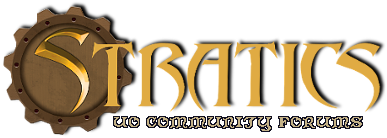There are twelve base colours, each of which has twelve highlight colours. For some of them one highlight is the same hue as the base, so there is not a "special cloth" look to the cloth.
This is
almost correct.
There are 12 base colors and 12 highlight colors, but all the highlight colors sit between the base colors. If you look at it as a color wheel, the base hues are at the integer multiples of 30 degrees, and the highlight hues are offset by 15 degrees. The pure red base hue will have two highlights that are close to red, but one will have a little more blue in it and the other will have a little more green in it. The difference is difficult to see just applied to a piece of cut or folded cloth, but when made into clothing (the higher contrast the better) the subtle variation is easier to see.
These hue maps are also higher contrast than the dye tub hues, so they bring out more of the detail in the artwork.
They were initially created in a search for an iridescence effect to use to re-hue fish (and some of them are used on fish), but as it turns out they look really nice on clothing -- and other things as well.

